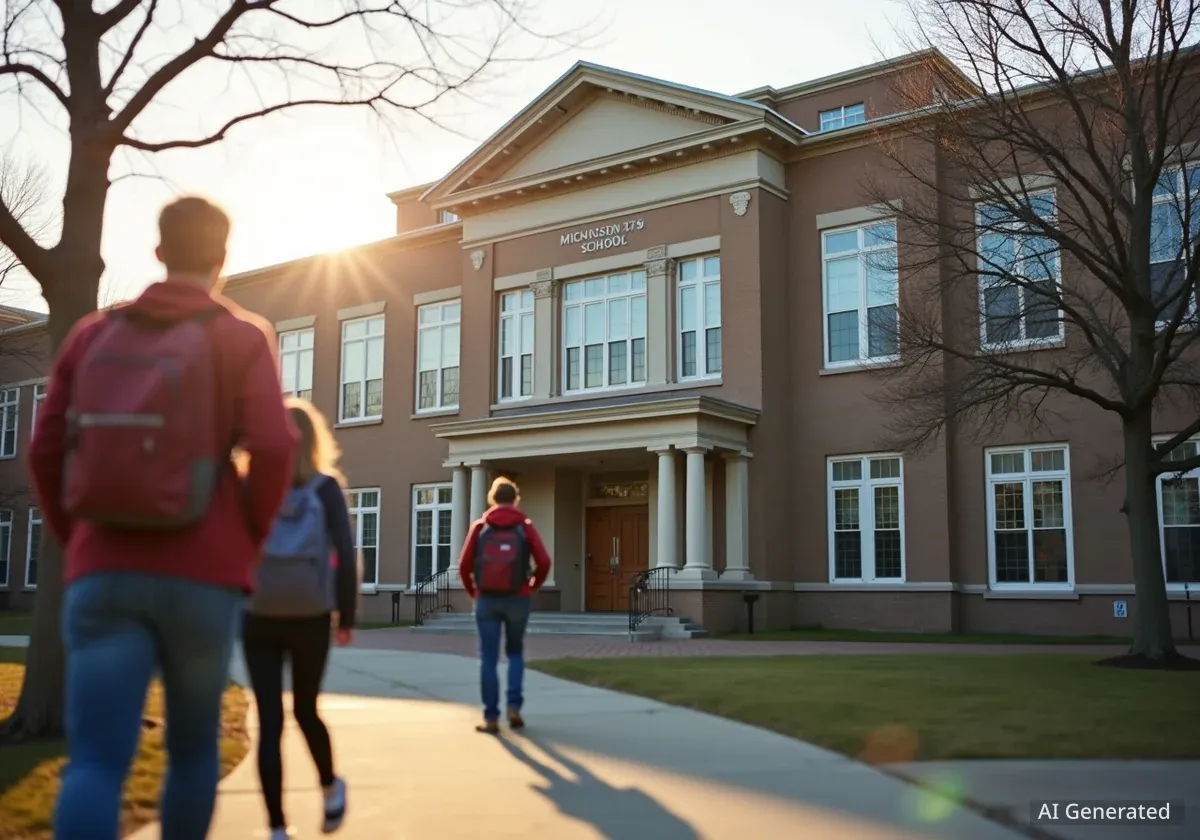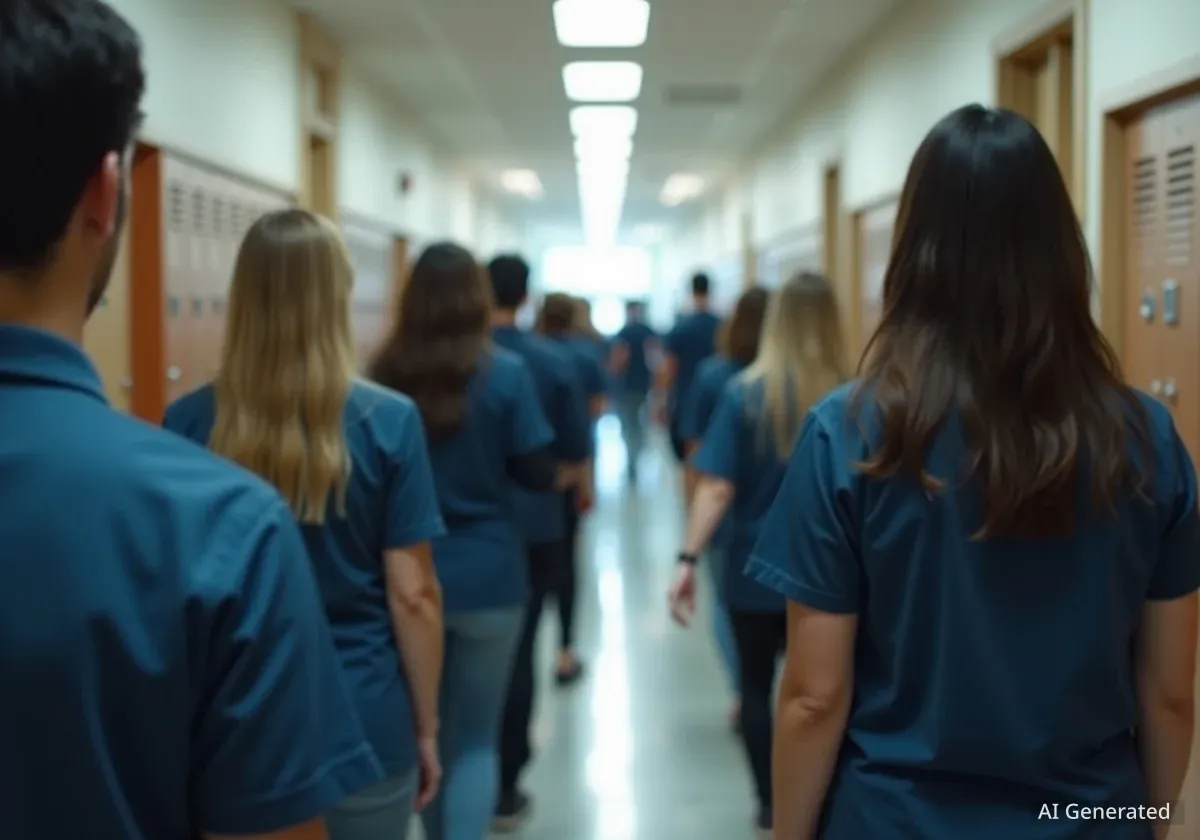The 2026 rankings for K-12 schools in Michigan have been released by Niche.com, a prominent platform for school reviews and data analysis. The new list, announced on September 29, reveals that private institutions occupy four of the top five high school positions in the state. Despite this, public schools maintain a significant presence, accounting for more than half of the top 25 spots.
Key Takeaways
- Niche.com has published its annual rankings for Michigan's best high schools for the 2026 academic year.
- Private schools dominate the highest tier, securing four of the top five positions in the state.
- Public schools demonstrate strong performance, with 13 institutions ranked within the top 25 overall.
- The rankings are based on a combination of public data, user reviews, and proprietary analysis from the Pittsburgh-based platform.
Understanding the Niche.com Rankings
Niche.com, headquartered in Pittsburgh, Pennsylvania, has become a go-to resource for families evaluating educational institutions. Its annual rankings provide a comprehensive look at schools and districts across the country. The platform's methodology is designed to offer a holistic view of a school's quality beyond just test scores.
To compile its lists, Niche analyzes a wide array of data points. This includes statistics from sources like the U.S. Department of Education, such as graduation rates, SAT/ACT scores, and enrollment figures. However, a key differentiator for Niche is its incorporation of user-generated content.
Ranking Factors
Niche's formula weighs multiple factors, including academics (60%), culture and diversity (10%), teacher quality (10%), and parent/student surveys on their overall experience (10%). Other elements like clubs, activities, and sports also contribute to the final score.
This approach means that the rankings reflect not only quantitative academic performance but also the qualitative experiences of students and parents. This blend of hard data and community feedback is intended to help families find a school that is the right fit for their specific needs and priorities.
Private Institutions at the Forefront
The 2026 results for Michigan highlight a consistent trend where private schools secure the highest positions. With four of the top five spots held by private institutions, the rankings underscore their reputation for academic excellence and rigorous college preparation. These schools often feature smaller class sizes, specialized programs, and high rates of college matriculation to top-tier universities.
Several factors contribute to the high rankings of these private schools. They typically operate with significant resources from tuition and endowments, which can translate into state-of-the-art facilities, a lower student-to-teacher ratio, and a wide array of extracurricular opportunities. This environment is often geared toward preparing students for competitive college admissions.
The Public vs. Private Debate
The debate over the advantages of public versus private education is ongoing. While rankings often favor private schools for their resources and outcomes, high-performing public schools offer excellent education without the cost of tuition, often with greater diversity and a broader range of programs accessible to the entire community.
For parents considering these top-ranked private schools, the cost of tuition is a major factor. However, many families view it as an investment in their child's future, hoping the focused academic environment will provide a competitive edge in higher education and beyond.
Public Schools Show Widespread Excellence
While private schools may lead the top five, the overall rankings show the strength and quality of Michigan's public education system. A total of 13 public high schools earned a place in the top 25, demonstrating that exceptional educational opportunities are widely available without tuition fees. This represents 52% of the top-tier schools, a significant achievement for the public sector.
High-performing public schools are often located in districts with strong community support and stable funding. These schools frequently offer a diverse curriculum, including Advanced Placement (AP) and International Baccalaureate (IB) programs, alongside a wide variety of athletics and arts programs.
The success of these public institutions is a testament to the dedicated teachers, administrators, and community members who support them. Schools like Ann Arbor's Pioneer High School, a consistently high-ranked public institution, are examples of how public schools can provide a top-quality education that prepares students for success.
"The presence of so many public schools in the top 25 indicates that excellence is not exclusive to the private sector. It highlights the incredible work being done in public school districts across Michigan," commented an education analyst familiar with state-level school data.
How Families Use School Rankings
For many families, school rankings like those from Niche.com are a starting point in the complex process of choosing a school. These lists provide a convenient way to compare schools based on a standardized set of criteria. Parents often use them to identify high-potential schools in their area or in communities they are considering moving to.
However, experts caution against relying solely on rankings. A school's position on a list does not always capture the full picture of its culture, teaching philosophy, or support systems for individual students. It is often recommended that families use rankings to create a shortlist of schools to investigate further.
The next steps in the selection process typically include:
- Visiting the school campus for a tour.
- Speaking with current students, parents, and teachers.
- Reviewing specific programs that match a student's interests.
- Understanding the school's culture and values.
Ultimately, the best school for a student is one that aligns with their unique learning style, interests, and long-term goals. While the 2026 Niche rankings offer valuable insights into Michigan's top high schools, they are one of many tools available to help families make this important decision.





